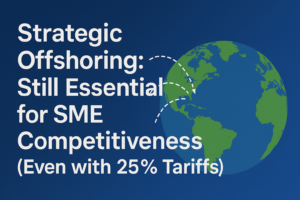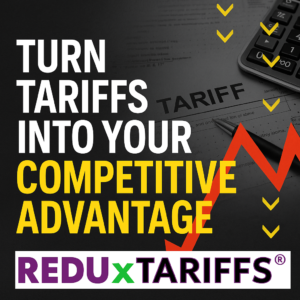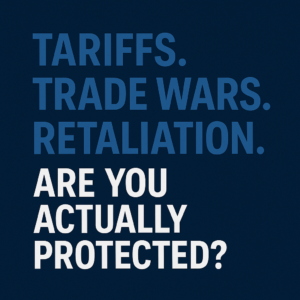
Introduction
As North American manufacturers of data loggers, data acquisition systems (DAQ), and measurement and control products enter 2025, they face an evolving set of cost challenges. Rising labor expenses, increasing material costs, supply chain disruptions, and geopolitical trade uncertainties—including tariffs—are pushing companies to reassess their sourcing strategies. Many firms are looking toward strategic offshoring of plastic, electrical, and metal subassemblies to low-cost, high-quality manufacturing locations like Vietnam and India, where non-tariff advantages can provide significant cost relief.
Key Manufacturing Cost Trends in 2025
1. Rising Labor and Overhead Costs in North America
- Wage Inflation: The U.S. and Canada continue to experience wage growth due to labor shortages and inflationary pressures. The Bureau of Labor Statistics projects continued labor cost increases in 2025.
- Energy Costs: Higher electricity and fuel prices add to operational expenses, particularly for manufacturers using energy-intensive production methods.
- Regulatory Compliance: Environmental and safety regulations require investments in emissions reduction, worker safety measures, and compliance certifications, increasing operational costs.
2. Material Price Volatility and Component Shortages
- Metals: The cost of aluminum, copper, and stainless steel, key materials in data loggers and DAQ systems, remains volatile due to global demand and supply chain bottlenecks.
- Semiconductors: While chip shortages have eased slightly, semiconductor prices remain high due to continued high demand in industrial automation, automotive, and IoT applications.
- Plastics and Resins: Supply chain issues affecting petroleum-based products continue to impact the cost and availability of enclosures, connectors, and insulating components.
3. Tariff and Trade Policy Uncertainty
- The U.S.-China trade war has resulted in sustained tariffs on Chinese-manufactured components, impacting cost structures for North American manufacturers reliant on Chinese imports.
- New U.S. legislation may expand restrictions on Chinese-made electronic components, further motivating manufacturers to seek alternative supply chain solutions.
- The United States-Mexico-Canada Agreement (USMCA) maintains certain trade advantages for North American manufacturing, but labor cost disparities remain a challenge.
Strategic Offshoring to Non-Tariff Countries: Vietnam and India
To mitigate rising costs, manufacturers are looking at offshoring subassemblies to Vietnam and India—two of the most promising non-tariff, low-cost manufacturing hubs. These countries offer high-quality production capabilities, favorable trade agreements, and cost advantages without the tariff burdens of China.
Why Vietnam?
- No Tariffs on Key Components: Vietnam benefits from favorable trade agreements, including the Comprehensive and Progressive Agreement for Trans-Pacific Partnership (CPTPP) and the U.S.-Vietnam Trade and Investment Framework Agreement, reducing tariff exposure.
- Competitive Labor Costs: Wages in Vietnam are significantly lower than in North America, with a well-established electronics manufacturing base.
- Growing Industrial Base: Major multinational corporations such as Samsung, Intel, and Apple have invested in Vietnam’s electronics manufacturing sector, improving the local supply chain for high-tech components.
Why India?
- Tariff-Free Access for Many Electrical and Metal Subassemblies: India benefits from various trade agreements that allow duty-free imports of electrical and mechanical components into North America.
- Advanced Engineering and Technical Expertise: India has a strong background in precision manufacturing, software development, and electrical engineering, making it ideal for high-quality DAQ system subassemblies.
- Government Support for Manufacturing: India’s Production-Linked Incentive (PLI) schemes encourage foreign investment in electronics and electrical equipment manufacturing.
Addressing Common Fears About Tariffs and Offshoring
One of the major concerns North American manufacturers have about offshoring is the fear of tariffs on imports from China. However, when moving production to Vietnam or India, this concern is largely mitigated. Unlike China, these countries benefit from:
- No Section 301 tariffs (which currently impact Chinese electronics imports into the U.S.).
- More favorable trade agreements with the U.S. and Canada.
- A growing manufacturing infrastructure supported by foreign investment and stable government policies.
Conclusion: The Case for Strategic Offshoring
For manufacturers of data loggers, DAQ systems, and control products, the cost pressures of 2025 necessitate a strategic rethink of supply chains. By offshoring plastic, electrical, and metal subassemblies to Vietnam or India, companies can achieve significant cost savings while maintaining quality and avoiding the pitfalls of tariff exposure.
Adopting a China+1 strategy—where manufacturing is diversified beyond China—will not only ensure resilience in supply chains but also provide a competitive advantage in pricing, lead times, and overall cost efficiency. As geopolitical uncertainties and economic pressures continue, forward-thinking companies will benefit from shifting production to these non-tariff, high-quality manufacturing hubs.
#manufacturing #supplychain #costtrends #offshoring #dataloggers #DAQsystems #measurementsystems #tariffs #tradepolicy #Vietnammanufacturing #Indiamanufacturing #ChinaPlusOne #electronics #semiconductors #plasticsubassemblies #electricalcomponents #metalsubassemblies #NorthAmerica #wageinflation #energycosts #compliancecosts #globaltrade #industrialautomation #componentshortages #strategicsourcing
#QualityControl #VietnamManufacturing #Manufacturing2024 #OffshoreManufacturing #REDUxEngineering #QualityAssurance #ManufacturingTips #TechInManufacturing #AuditProcess #InspectionProcess






